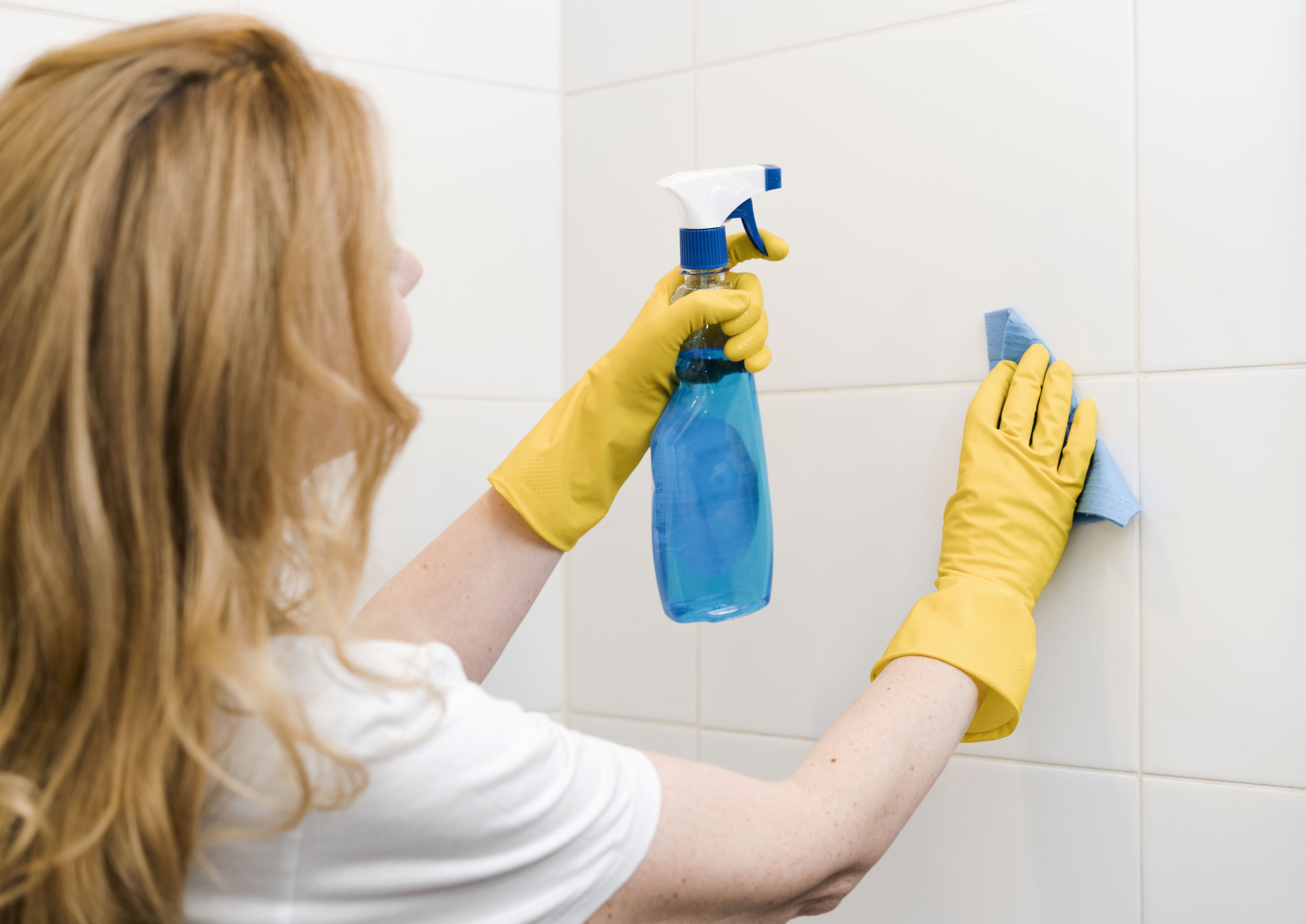
Mould in the bathroom is a problem that can occur in any home, particularly where moisture prevails. Black spots on the ceiling, mould on bathroom grout, or an unpleasant smell are signals that it's time to act. In this article, we will show you how to prevent the growth of mould, how to react to its first signs, and how to effectively remove mould from the bathroom using both home remedies and professional methods. What steps should be taken to keep the bathroom clean and healthy?
What will you learn from our text?
A mouldy bathroom not only looks unsightly but can also lead to serious health problems for its users! Therefore, we recommend everyone to read our text, in which we discuss:
- The reasons why mould can appear in the bathroom.
- What to do to prevent its development.
- How to remove it using both home and special methods.
Why does mould appear in the bathroom?
Moisture in the bathroom is the main reason why mould appears on walls, ceilings, or grout. The bathroom is a place where we use water daily, and water vapor settles on surfaces, creating ideal conditions for mould growth. Mould on the ceiling – causes include poor ventilation, leaky windows, lack of proper heating, or too high humidity. Mould spores floating in the air settle on damp surfaces, where they quickly reproduce.
Another factor conducive to mould growth is the lack of regular cleaning. Soap residues, lime scale, or dirt on grout provide nourishment for moulds. Often, mould on the ceiling starts from small, black dots that are easy to overlook. Ignoring these signs can lead to more serious problems, such as surface damage or health hazards.
How to recognize the first signs of mould?
Early detection of bathroom mould is crucial to prevent its spread. Here's what to look out for:
- black dots on the ceiling or walls – often the first sign of mould on bathroom grout – white grout becomes black or greenish,
- unpleasant, musty smell that doesn't go away after cleaning,
- visible stains with irregular shapes on the walls or ceiling.
When you notice these symptoms, don't delay – quick action will prevent mould growth and limit its harmfulness.
How to prevent mould in the bathroom?
Preventing mould is a process that requires regular actions and care for the conditions in the bathroom. The key is to control humidity and ensure proper air circulation. Here are some practical steps to help you prevent mould growth:
How to prevent mould in the bathroom?
- Proper ventilation:
- it's worth opening the window after every bath or shower,
- investing in a bathroom fan with adequate power,
- checking the ventilation grilles' unobstructed flow – blockages can encourage mould growth.
- Humidity control:
- using a dehumidifier if moisture in the bathroom is an issue,
- keeping humidity levels below 60% – this can be measured with a hygrometer.
- Keeping the bathroom clean:
- regular cleaning of grout, walls, and ceiling to remove dirt and soap residues,
- using mould prevention agents, such as vinegar solution or special products.
- Repairing defects:
- sealing pipes and taps that increase humidity,
- checking the sealant around the bath or shower enclosure for leaks.
Regularly applying these rules will make it easier to prevent mould and enjoy a healthy, clean bathroom.
How to remove mould from the bathroom? Home remedies and professional methods
When mould appears in the bathroom, quick action is crucial. Removing mould from the bathroom can be done using both home remedies and professional products. Here's what can be done:
- white vinegar – simply dilute vinegar with water (1:1), spray it on the mould on bathroom grout or walls, leave it for an hour, and then wash off,
- baking soda – dissolve 2 tablespoons of soda in 1 litre of water and wipe the affected areas. Soda works antifungally and prevents mould growth,
- hydrogen peroxide: apply a 3% hydrogen peroxide solution to the mould on the ceiling, wait 10 minutes, and wipe with a damp cloth.
If home remedies aren't enough, it's worth using a fungicide available in DIY stores. Such products are effective in removing mould but require caution:
- wearing gloves and a protective mask to avoid contact with chemicals and mould spores,
- following the instructions on the packaging – some products require rinsing after use,
- thoroughly airing the bathroom after using the product.
In the case of large surfaces affected by bathroom mould, we advise considering professional services specializing in mould removal.
What to do when mould returns?
If mould reappears despite efforts, the problem may lie in unresolved causes. Here's how to approach the recurring issue:
- checking for leaks, sealing issues, or insulation problems,
- installing a more efficient fan or ventilation system,
- seeking professional advice to assess whether drying the walls or other significant work is needed.
Regular checks and quick reactions to black spots on the ceiling or other signs of mould will help keep the bathroom in good condition.
A mouldy bathroom – it can be changed!
Mould in the bathroom is a problem that can be effectively combated using appropriate prevention and reaction methods. The key is humidity control, regular cleaning, and rapid action when the first spots appear on the ceiling or grout in the bathroom. Through home methods, such as vinegar or baking soda, and professional products, mould can be removed and its return prevented. Always remember that a healthy bathroom means not just aesthetics but also good health. Meanwhile, our blog, where we write about topics such as how to step by step make a suspended ceiling in the kitchen, is an ideal place to expand your knowledge on construction and design topics.


















